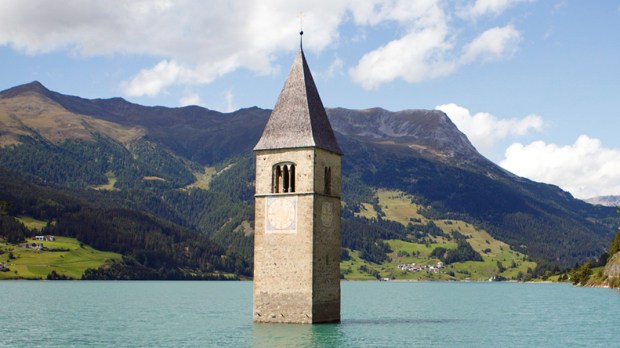Lenten Campaign 2025
This content is free of charge, as are all our articles.
Support us with a donation that is tax-deductible and enable us to continue to reach millions of readers.
Curon, a small town in Trentino Alto Adige, northern Italy, was once home to a 14th-century Romanesque church famous for its picturesque bell tower, which stood against a mystical Alpine background. But in the 1950s, authorities decided that a dam had to be created right where the town was located, by merging the nearby lakes of Resia and Curon.
Residents protested the intervention, sending representatives to Rome in an effort to get Pope Pius XIII to help put the project to a halt. Despite protests, the plan went ahead, and in 1950 the town and its beautiful church were completely submerged in water. A total of 1,290 acres of agricultural land and about 160 homes were wiped out in the process. The only thing left as a reminder of the old town is Curon’s church bell tower, still soaring above the dark green and blue waters of the lake.
During winter, when the water freezes, visitors can walk all the way to the bell tower and look down to what what’s left of the 14th-century structure, which is still visible below the surface. According to a local tale, bells can still be heard at night during long winter nights — a beautiful but implausible phenomenon, as the church’s bells were removed right before the creation of the dam, as shown in archival pictures.
But even if bells can no longer be heard, Curon’s “floating bell tower,” as locals call it, is a powerful reminder of the destructive choices made in the name of progress in this idyllic corner of Vallelonga Alpine valley.

